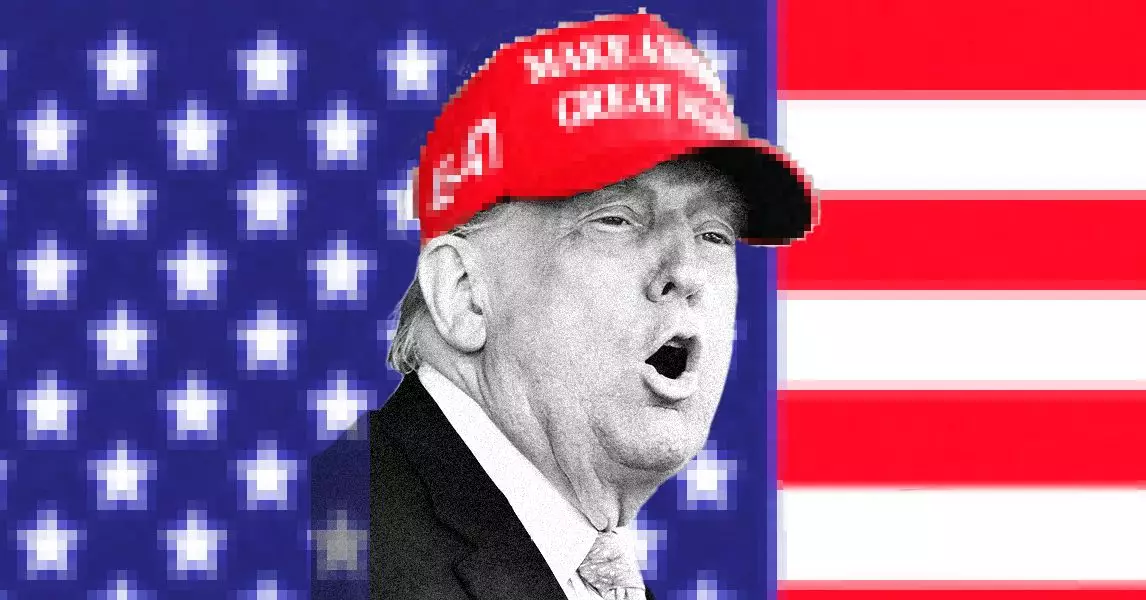The recent unveiling of the Trump Administration’s artificial intelligence (AI) strategy marks a significant shift in how the United States approaches technological leadership. Unlike conventional policies that often emphasize cautious regulation, this plan adopts a provocative stance—favoring deregulation and rapid infrastructure development. It underscores a bold conviction: that America must accelerate AI innovation at all costs to maintain its edge globally. This mindset reveals a deep-seated belief that overly restrictive policies will stifle the sector’s growth, much like choking the life out of an emerging powerhouse. By prioritizing speed and scale, the plan signals unwavering confidence that technological advancement, rather than bureaucratic oversight, will secure American dominance.
However, this approach invites a fundamental debate about balancing innovation with responsibility. While fostering rapid progress is vital, sidestepping regulation raises questions about ethical standards, safety, and societal impacts. The strategy’s conviction that excessive bureaucracy could hinder progress neglects the necessary safeguards that prevent malfeasance and safeguard human rights. Do the benefits of unbridled AI development outweigh the risks of unchecked technological power? The administration’s stance suggests a preference for market-led growth, entrusting corporations with the mandate to steer AI’s future without heavy-handed federal interference.
Building Infrastructure With a Bold Vision for Power
Fundamentally, the plan commits to expanding AI infrastructure aggressively. The language employed—“Build, Baby, Build!”—evokes a wartime-like urgency to establish the physical and digital foundations necessary for pioneering AI technology. This includes investing in energy resources, data centers, and communications networks. The emphasis on infrastructure indicates the government’s recognition that AI’s future isn’t just about algorithms but also about the critical architecture supporting them.
Yet, the strategy’s explicit rejection of climate regulations to facilitate infrastructure growth unveils a contentious stance. While energy-intensive AI development undoubtedly requires a robust energy supply, dismissing environmental concerns could have long-term repercussions, especially given the accelerating climate crisis. The administration appears willing to prioritize immediate technological and economic gains over environmental sustainability. Is this short-sighted? Or is it a pragmatic acknowledgment that global AI leadership justifies risky environmental trade-offs? The answer likely depends on one’s perspective on America’s role as a global innovation leader versus its responsibility to planetary health.
International Diplomacy and Strategic Competition
A crucial element of the plan is asserting US leadership on the global diplomatic front. In a landscape increasingly shaped by China’s rapid AI advancements, the strategy aims to position America as the dominant geopolitical force in artificial intelligence. This includes leading international diplomacy efforts, setting standards, and safeguarding the US’s technological edge through collaboration and strategic partnerships.
What distinguishes this approach from its predecessors is its blunt tone against China’s ambitions, framing the AI race as a zero-sum game. The administration’s focus on securing national security and technological dominance suggests an attitude that ambiguity and openness give way to assertiveness. Yet, embracing nationalism in such a critical area risks fueling an AI arms race, with dangerous implications for global stability. Is this competitive posture driven by genuine visionary leadership, or does it risk igniting an era of relentless technological militarization? The stakes are high, and the geopolitical chess game could define the 21st century.
Resisting the Constraints of Ideology and Ethical Concerns
Perhaps the most provocative element of this strategy is its stance against what it perceives as ideological bias in AI development. The administration explicitly advocates for fewer restrictions on what it calls “woke” AI, emphasizing objectivity and freedom from ideological influence as criteria for federal procurement. This indicates a desire to keep AI technology free from what they see as political correctness or progressive constraints that could hinder innovation.
This perspective assumes that ethics and social responsibility can be secondary to technological progress if managed correctly. However, ignoring ethical concerns risks creating AI systems that may perpetuate biases or be misused, leading to broader societal harm. The administration’s insistence on objective, bias-free AI as a condition for government contracts may be a strategic move to ensure that corporate interests remain aligned with their vision of a free, unregulated AI market. Yet, this stance risks dismissing the importance of embedding societal values into AI development, potentially accelerating unequal and unfair outcomes.
—
Overall, the AI strategy unveiled by the Trump Administration reveals a worldview that places supreme confidence in free-market innovation, infrastructure expansion, and strategic geopolitical dominance. While this approach could push America ahead in the new technological frontier, it also raises critical questions about responsibility, environmental sustainability, and global stability. The choice to prioritize rapid growth over cautious regulation underscores a fundamental belief in capitalism’s capacity to self-regulate and innovate freely—an outlook that might indeed be America’s greatest weapon but also its most significant challenge moving forward.


Leave a Reply